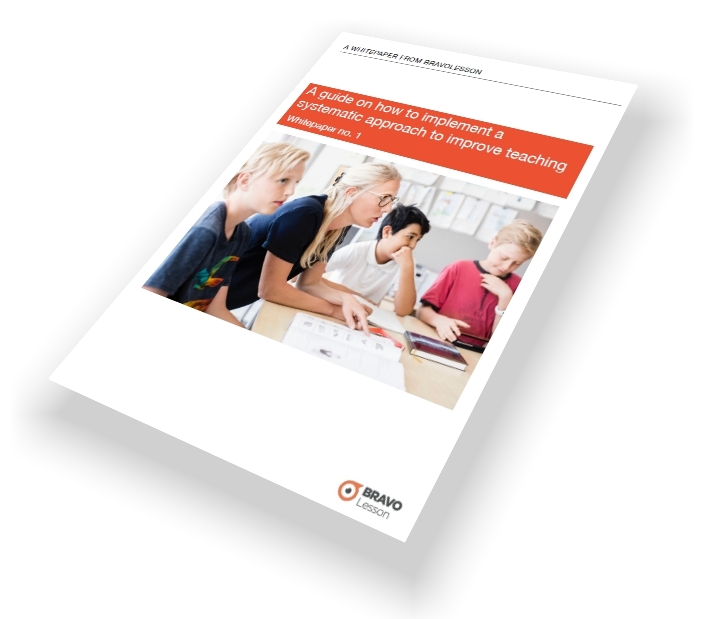Part 4 of 10. This is how schools and school districts handle the first and biggest challenge

BRAVOLesson blog April 5th
All pupils and students deserve fantastic teaching
and all teachers deserve constructive feedback!
That is the core of school improvement.
A systematic approach to improve teaching. Our ten part series continues – this is part 4.
Some schools and municipalities/school districts get going with a systematic approach and others do not. We have previously described that feedback to teachers is not only about systematics but also about collaborating and improving together – to be recognised as a teacher and experience increased work satisfaction. To get to that, we have recognised a pattern; It is about systematics and a concrete plan.
Those who get going start by creating a plan and then being transparent about What to do and How. They hand out responsibilities, set goals, work collaboratively and follow up. Nothing is new under the sun.
In our previous blog we adressed the 4 + 2 challenges to achieve systematic focus on how to improve teaching. The first challenge is to prioritise – to prioritise, organise and to use time for working with one of the key characteristics of successful school. ***
“All schools work with school improvement, but very few schools have a concrete plan for how to improve teaching systematically.”
Download our example
In our guide there is an example of a plan that helps you tackle the 4 + 2 challenges for systematic feedback to teachers – for their own reflection on teaching. The plan is based on the principal’s legal responsibility for the quality of the teaching. It also has the objective of achieving collaborative learning – that, it step by step, becomes natural for teachers to give and receive feedback in order to systematically develop the teaching together. Download our example via the link below.
PS. We know that we have used the word “systematically” seven times in this blog. Sorry!… however, that’s just the right word.
_______________________________
*** Sources:
Hargreaves, A. & Fullan, M. (2012). Professional capital: Transforming teaching in every school. New York, NY: Teachers College Press.
Leithwood, Jantz & Steinbach (2002) Changing Leadership for Changing Times. Buckingham: Open University Press
_______________________________
We hope you will follow our series! It will continue until the summer of 2019 with one new part every two weeks.
Greetings from the BRAVOLesson Team

Online tools to improve teaching and learning



